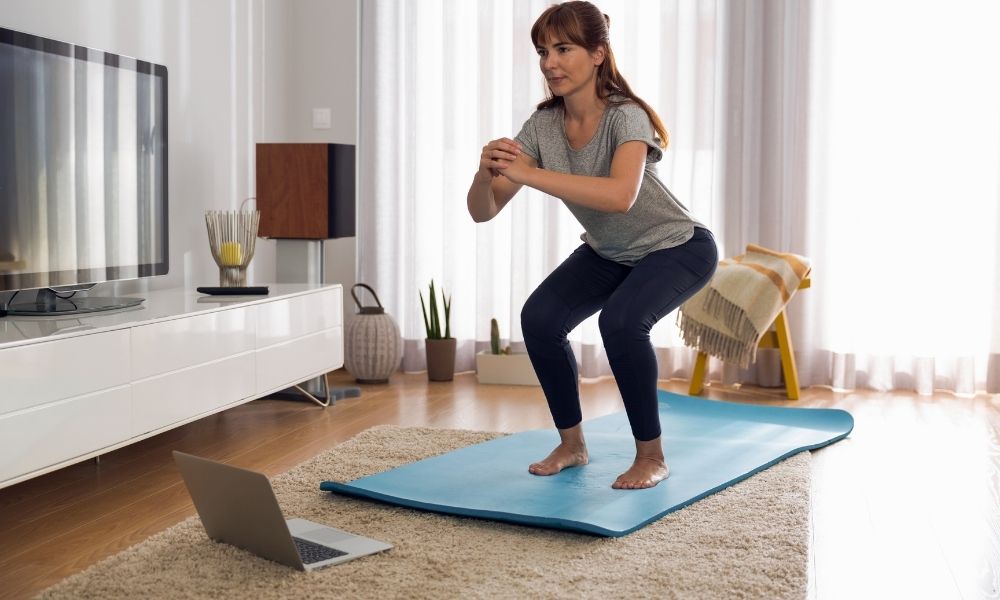Starting a fitness routine can feel overwhelming, especially if you’re new to exercise or have a busy schedule. The idea of going to a gym may seem intimidating, time-consuming, or costly. The good news? You don’t need fancy equipment or a gym membership to start getting fit. With the right beginner-friendly workouts, you can improve your health, build strength, and boost your energy right from the comfort of your home.
Exercising at home is not only convenient but also empowering—it allows you to work at your own pace, save money, and create a routine that fits seamlessly into your daily life. This guide will walk you through simple, effective, and beginner-friendly workouts you can do at home, helping you build confidence while improving your overall fitness.
Why Home Workouts Are Perfect for Beginners
Home workouts provide a safe and comfortable environment, which is especially important if you’re just starting out. You can exercise without feeling self-conscious, adjust the intensity based on your fitness level, and save time by skipping the commute to the gym.
In addition, home workouts allow flexibility. Whether you have 10 minutes or an hour, you can tailor exercises to your schedule. All you need is some open space, a yoga mat, and, if possible, light weights or resistance bands. Even without equipment, bodyweight exercises are highly effective for beginners.
Warm-Up: Preparing Your Body for Movement
Before diving into any workout, warming up is crucial. A proper warm-up increases blood flow, loosens joints, and reduces the risk of injury. For beginners, aim for 5–10 minutes of light activity, such as:
- Marching in place
- Arm circles
- Shoulder rolls
- Light stretches
- Gentle squats
These movements prepare your body and mind for exercise, ensuring a smoother and safer workout.
Full-Body Beginner-Friendly Workouts at Home
1. Bodyweight Squats
Squats are one of the most effective exercises for strengthening your legs and core. Start by standing with feet shoulder-width apart, slowly lowering your body as if sitting back into a chair, then return to standing. Do 2–3 sets of 10–12 reps.
Squats improve balance, build lower-body strength, and are functional, meaning they help with everyday movements like sitting and standing.
2. Modified Push-Ups
Traditional push-ups may feel difficult for beginners, so start with knee push-ups. Place your hands on the floor shoulder-width apart, lower your body while keeping your knees on the ground, then push back up. Aim for 2–3 sets of 8–10 reps.
Push-ups strengthen your arms, chest, and shoulders while also engaging your core.
3. Glute Bridges
Lie on your back with knees bent and feet flat on the floor. Lift your hips towards the ceiling, squeeze your glutes, then slowly lower back down. Perform 2–3 sets of 12 reps.
This exercise strengthens your glutes, hamstrings, and core while also improving posture.
4. Standing Calf Raises
Stand with your feet hip-width apart, slowly rise onto your toes, then lower back down. Repeat for 2–3 sets of 15 reps.
Calf raises are a simple way to build ankle stability and strengthen your lower legs, which is especially helpful if you spend a lot of time sitting.
5. Plank Hold
The plank is excellent for core strength. Start on your forearms and toes, keeping your body in a straight line. Hold the position for 15–20 seconds, gradually increasing as your strength improves. Do 2–3 rounds.
Planks not only strengthen your abs but also engage your back, shoulders, and glutes.
6. Wall Sit
Stand with your back against a wall, slide down into a seated position, and hold for 20–30 seconds. Rest, then repeat 2–3 times.
This simple exercise strengthens your legs and improves endurance without requiring movement.
7. Step-Ups (Using Stairs or a Sturdy Platform)
Find a safe, stable surface like a staircase or bench. Step up with one leg, then step down, alternating sides. Perform 2–3 sets of 10 reps per leg.
Step-ups are great for building leg strength and mimicking everyday movements like climbing stairs.
Cool-Down: Stretching for Recovery
After your workout, it’s important to cool down. Stretching helps your muscles recover, improves flexibility, and reduces soreness. Some beginner-friendly stretches include:
- Hamstring stretch (touching toes gently)
- Quadriceps stretch (holding one foot behind you)
- Shoulder stretch (pulling one arm across your chest)
- Neck rolls for relaxation
Spend 5–10 minutes cooling down to support recovery and prevent stiffness.
Tips to Stay Consistent with Home Workouts
Consistency is the key to seeing results. Here are a few tips to help you stick with your routine:
- Start small: Aim for 10–15 minutes a day, then increase gradually.
- Set realistic goals: Focus on progress, not perfection.
- Make it enjoyable: Play music, follow online beginner workout videos, or exercise with a friend virtually.
- Track your progress: Keep a journal or use a fitness app to record your workouts.
- Celebrate small wins: Every rep counts, and progress is built step by step.
FAQs About Beginner-Friendly Home Workouts
1. How often should beginners work out at home?
Beginners can start with 3–4 sessions per week, each lasting 20–30 minutes. Over time, you can increase frequency and duration as your fitness improves.
2. Do I need equipment for effective home workouts?
Not necessarily. Bodyweight exercises are highly effective for beginners. However, resistance bands, dumbbells, or yoga mats can add variety and make workouts more comfortable.
3. What if I don’t have much space at home?
You don’t need a large area. Many beginner-friendly exercises like squats, planks, and push-ups require minimal space and can be done in a living room or bedroom.
4. How long before I start seeing results?
Results vary depending on consistency and effort. With regular workouts and balanced nutrition, most beginners notice improvements in energy and strength within 4–6 weeks.
5. Can home workouts help with weight loss?
Yes. Combined with a healthy diet, home workouts can contribute to weight loss by burning calories, building muscle, and boosting metabolism.
Conclusion
Starting a fitness routine doesn’t have to be complicated or intimidating. With beginner-friendly workouts you can do at home, you have the tools to improve your health, build strength, and increase confidence—all without a gym membership.
By warming up properly, practicing simple exercises like squats, push-ups, and planks, and staying consistent, you’ll see steady progress over time. Remember, the goal isn’t perfection but progress. Each small step brings you closer to a stronger, healthier version of yourself.
With dedication, patience, and the right mindset, working out at home can become an enjoyable and rewarding part of your lifestyle.




